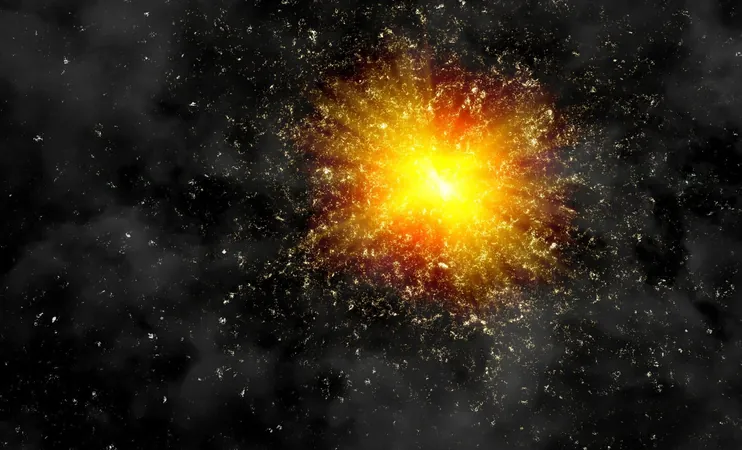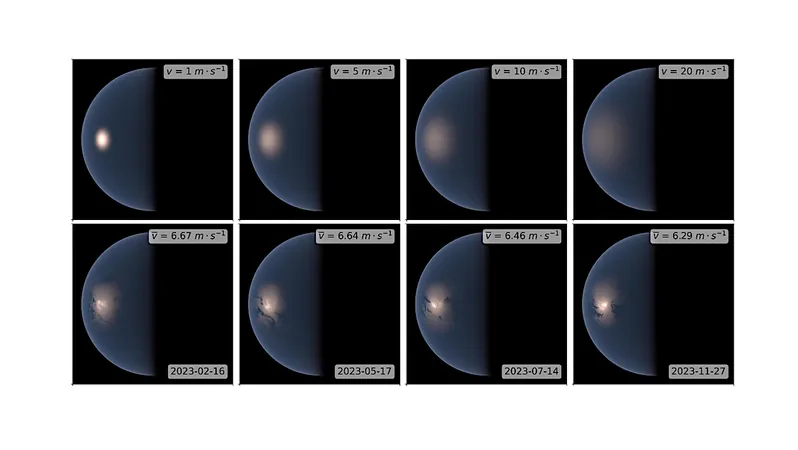
A Stellar Blast for the Ages: The Record-Breaking Nova That Defied Expectations
2025-04-21
Author: Charlotte
An Unprecedented Celestial Event
In a stunning turn of astronomical events, a long-recurring nova in the Large Magellanic Cloud has not only shattered temperature records but also revealed groundbreaking insights into stellar evolution. This explosive phenomenon, known as LMCN 1968-12a, erupted spectacularly in August 2024, capturing the attention of astronomers worldwide.
The Hottest Nova Beyond Our Milky Way!
This nova, the most intense ever detected outside our Milky Way galaxy, has amazed researchers with its extraordinary heat. It follows a predictable eruption pattern roughly every four years, but this latest explosion stands out. For the first time, scientists conducted a near-infrared analysis on such a stellar event, utilizing the advanced Magellan Baade and Gemini South telescopes in Chile. The data, collected just over a week after the eruption, unveiled shocking temperatures soaring up to 5.4 million degrees Fahrenheit (3 million degrees Celsius)!
A Chemistry Mystery Unfolds
But the surprising findings didn’t stop with temperature. The nova’s spectral analysis revealed an anomalous abundance of ionized silicon, shining at an intensity 95 times greater than our sun across all wavelengths. Surprisingly absent were other high-energy elements like sulfur, phosphorus, calcium, and aluminum, typically expected in such explosive environments. According to experts, this unusual chemical makeup points toward an incredibly hot and distinct environment, diverging from their previous expectations.
The Cosmic Connection: Metallicity Matters
This leads to a tantalizing possibility: the relationship between local galactic chemistry and the intensity of nova eruptions. The Large Magellanic Cloud, with its lower metallicity compared to the Milky Way, allows more hydrogen and helium to accumulate on the white dwarf before it detonates. This contrasts sharply with the higher-metallicity settings of our galaxy, which usually produce less intense blasts.
Understanding Nova Dynamics
So, what exactly is a nova? It occurs when a white dwarf—the dense remnant of an exploded star—pulls gas from a nearby companion star, forming an accretion disk. As the material compiles, conditions become ripe for a thermonuclear runaway reaction. This leads to a cataclysmic release of energy that lights up the night sky, with recurrent novae like LMCN 1968-12a undergoing this cycle repeatedly. Although the core star survives, each fiery outburst sheds material, altering the dynamics of the binary system.
A Benchmark in Astronomy
Since its initial discovery in 1968, LMCN 1968-12a has remained a critical subject for scientists. Its regular eruptions, documented since 1990 with a near-exact four-year rhythm, present a golden opportunity to explore the effects of time, composition, and the underlying physics behind these cosmic explosions. As this nova continues to defy convention, it paves the way for deeper exploration into the universe’s fiery mysteries.









 Brasil (PT)
Brasil (PT)
 Canada (EN)
Canada (EN)
 Chile (ES)
Chile (ES)
 Česko (CS)
Česko (CS)
 대한민국 (KO)
대한민국 (KO)
 España (ES)
España (ES)
 France (FR)
France (FR)
 Hong Kong (EN)
Hong Kong (EN)
 Italia (IT)
Italia (IT)
 日本 (JA)
日本 (JA)
 Magyarország (HU)
Magyarország (HU)
 Norge (NO)
Norge (NO)
 Polska (PL)
Polska (PL)
 Schweiz (DE)
Schweiz (DE)
 Singapore (EN)
Singapore (EN)
 Sverige (SV)
Sverige (SV)
 Suomi (FI)
Suomi (FI)
 Türkiye (TR)
Türkiye (TR)
 الإمارات العربية المتحدة (AR)
الإمارات العربية المتحدة (AR)